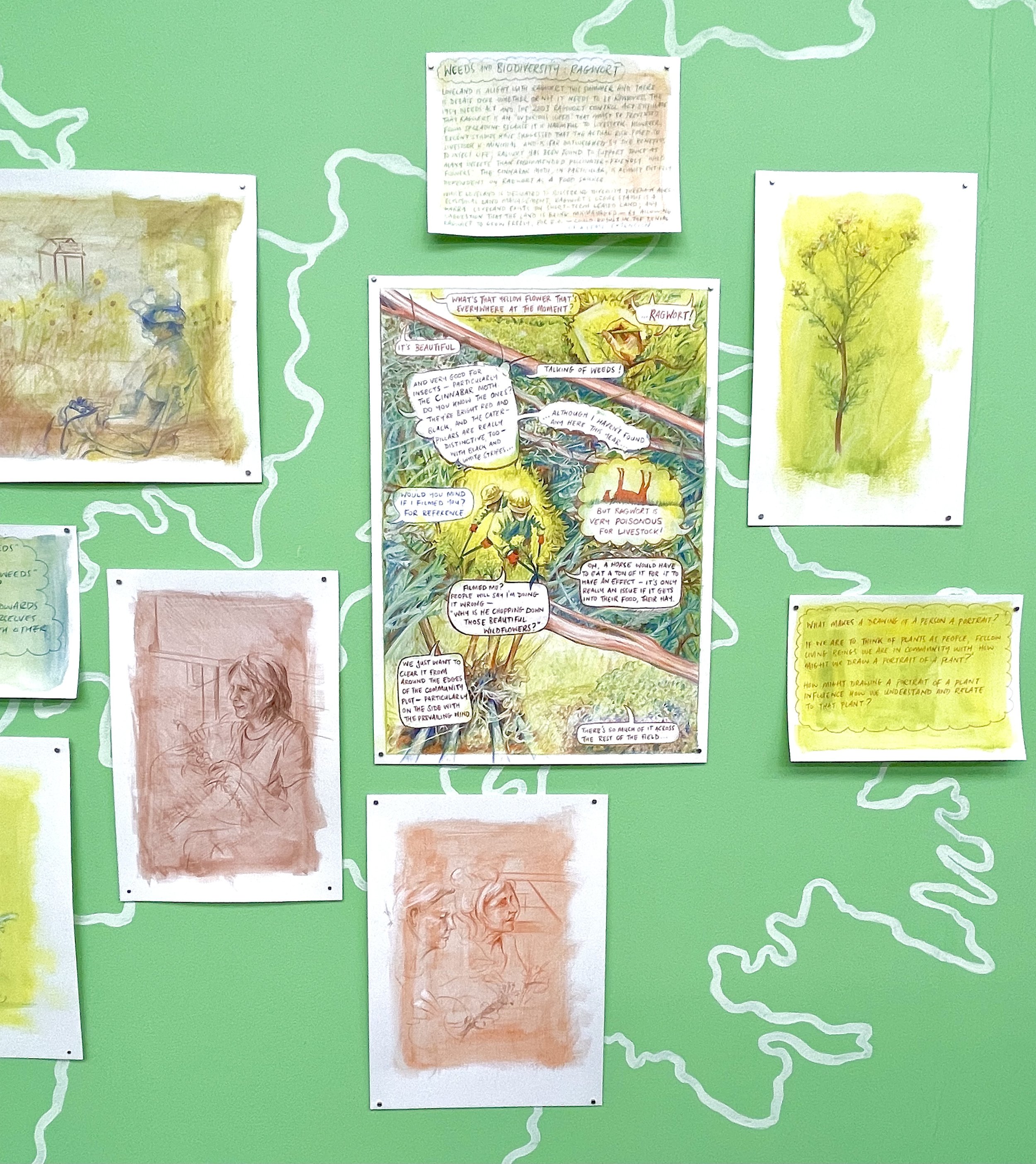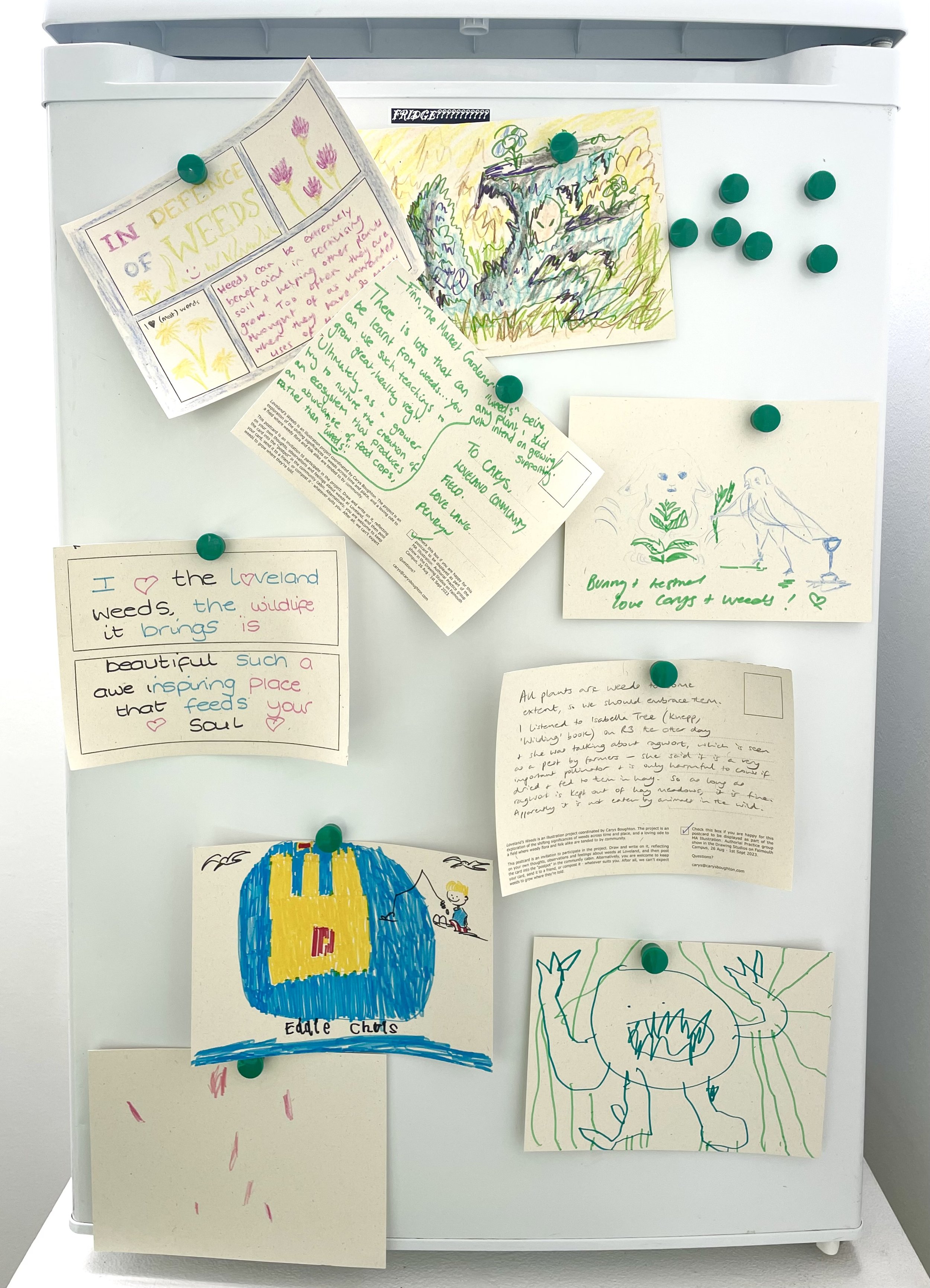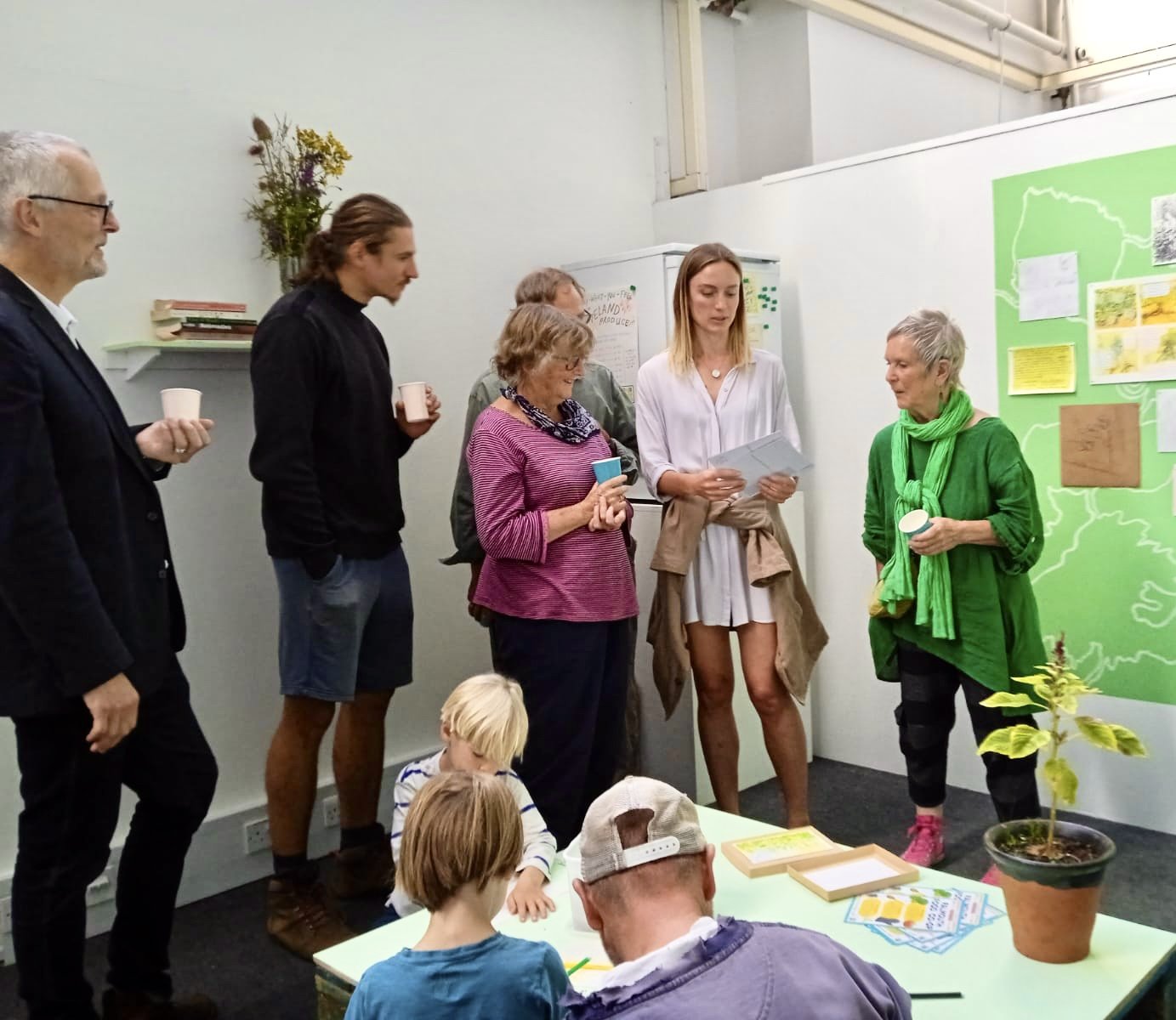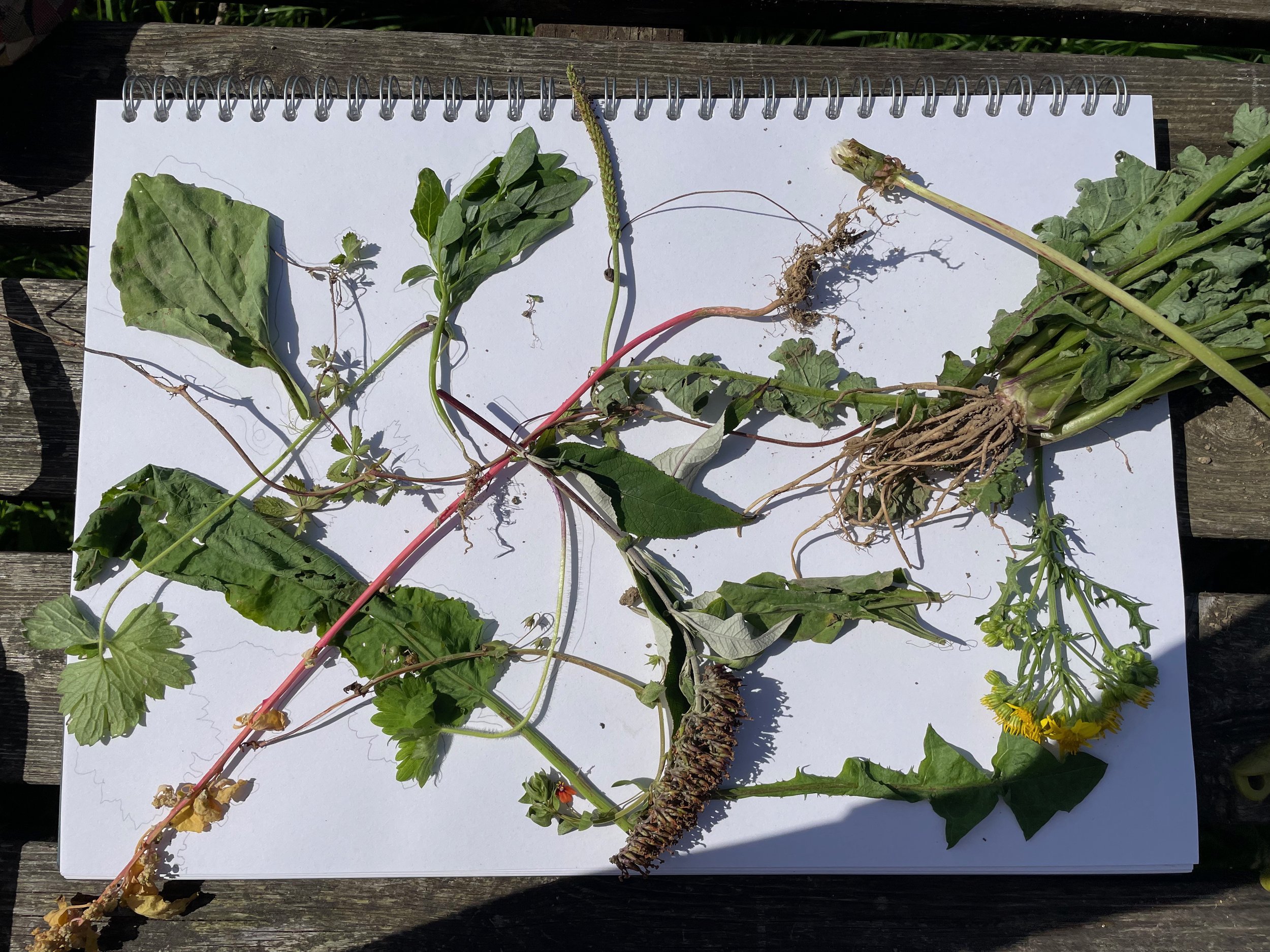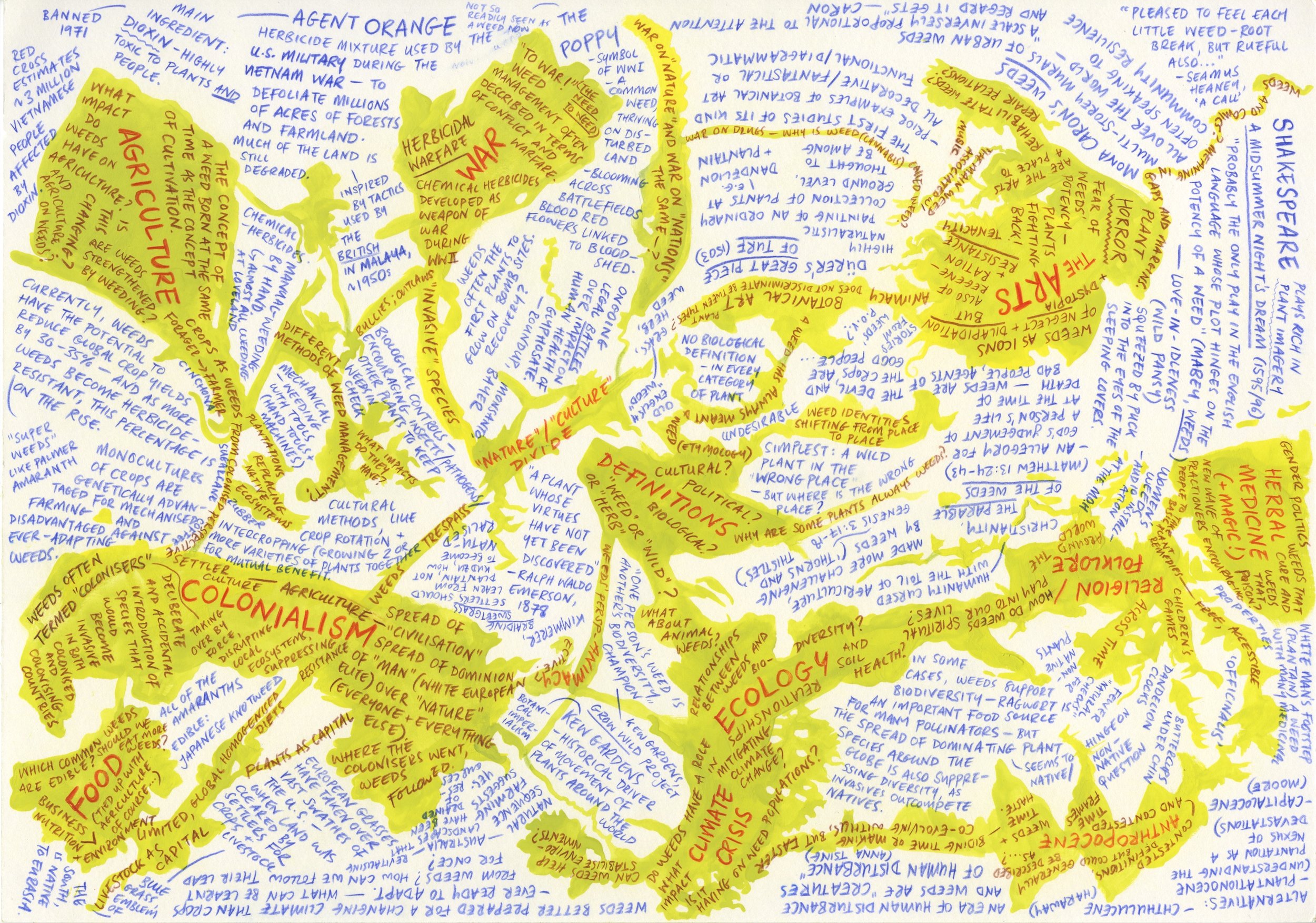A selection of photographs of my space in the MA graduate show this summer. The display focused on my final project - Loveland’s Weeds - a collection of postcard comics, accompanied by a weed “map”, documenting conversations held at a local community agro-ecology project (Loveland) about weeds and what we can learn from them. For more details about the project, please see this overview post here.
While developing the show space, I had three priorities: to display the work in an accessible way; to speak to how weeds trespass across the fences between domesticity and wilderness; and to centre Loveland’s primary purpose - providing the community with locally and regeneratively-grown produce. Please see the image captions for details about each element in the space.
The full Loveland’s Weeds display.
The original postcard comic artwork was displayed alongside hand-drawn portraits of Lovelanders - people and plants alike - and handwritten thoughts and observations about weeds. The background is a weed “map” - the outline of the leaves, flowers, and roots of a sample of weeds from Loveland.
A makeshift table from Loveland palettes, used to display the set of Loveland Weeds postcard comics, flyers about the Falmouth Food Coop - of which Loveland is a part - a potted “pigweed” (callaloo/amaranth) from Falmouth University’s own little kitchen garden, and blank postcards and drawing materials for visitors to use as they wished.
The fridge contained produce from Loveland, available for visitors to the show to buy on a pay-as-you-feel basis.
Postcards written and drawn by visitors to both Loveland and to the show.
A bouquet of weeds from Loveland, and a few weedy reference books for visitors to flick through.
Chatting to visitors - including a few Loveland volunteers - during the show’s opening.


